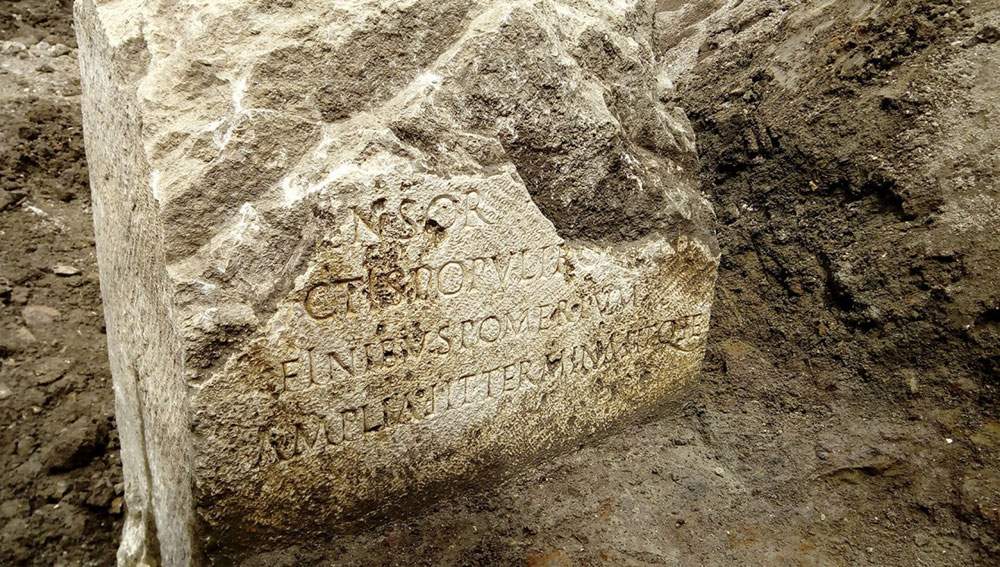Rare discovery in Rome: a memorial stone testifies to the expansion of the city in the time of Claudius
During excavations for the installation of the new sewer system in Augustus Emperor Square, a rare travertine ’pomerium’ cippus was found, still embedded in the ground. Thanks to theinscription, the cippus can most likely be traced back to Emperor Claudius and thus to theexpansion of the pomerium carried out by him in 49 AD.
Large in size (193 x 74.5 x 54), it is now on display in the Paladino Room of the Ara Pacis Museum, where the cast of the statue of Emperor Claudius is located, awaiting final placement in the museum spaces of the Mausoleum of Augustus.
"Rome never ceases to amaze and always shows itself with new treasures. This is an exceptional find: over time, only ten other cippus related to the time of Claudius have been found, and the most recent one to date was found in 1909, thus more than 100 years ago. With the reopening of the Mausoleum of Augustus in March 2021, and with the work on Augustus Emperor Square, the whole area will come back to life. In this way a central quadrant of our city will be completely renovated," said Rome Mayor Virginia Raggi.
The inscription refers to the boundary of the pomerium, that is, the sacred boundary that separated the city in the strict sense (urbs) from the outer territory (ager): a space of land, along the walls, consecrated and delimited with stone boundary stones, where it was forbidden to plow, inhabit or erect buildings and within which it was forbidden to cross in arms.
Because of its importance, the pomerio was very rarely changed. The author of the changes was considered the “new founder” of the city: this is precisely what Claudius does, with the course marked by his cippus, after the conquest of Britain, that is, he claims the expansion of the boundaries of the Roman people, in an articulated vision that allows us to understand political outlooks, philosophy, strategy and ambitions.
The seriality of the official text engraved on the cippus makes it possible to reconstruct the missing part. Claudius, according to the ritual formula, is remembered with his titles and offices and claims the enlargement of the Pomerium, not mentioning conquered territories, but emphasizing the enlargement of the borders of the Roman people. This means enlargement of the physical boundary, but may also indicate the enlargement of the civic body, with the extension of Roman citizenship to the elites (primores) of Gaul. In any case, the widening of the pomerio indicates a broadening of the vision of the Urbe. Claudius intervenes in the space of the city through an action that has strong religious, political, and symbolic significance. The layout and arrangement of the preserved text are similar to those of the other known specimens. Not preserved is the serial numeral, which in three cases appears on the left side of the cippus, and the word pomerium, in two cases attested on the top. The intervention on the pomerio carried out by Claudius is the only one attested both epigraphically and literally. It is also the only one mentioned in the lex de imperio Vespasianus, as a precedent, as well as the one that opens the debate on the names of the authors of any Pomerium extensions.
The exceptional nature of the discovery of this cippus offers new insights into the pomerio and also into the existence or non-existence of the ius proferendi pomerii, and more generally into the values that the Romans attached to “space.”
 |
| Rare discovery in Rome: a memorial stone testifies to the expansion of the city in the time of Claudius |
Warning: the translation into English of the original Italian article was created using automatic tools. We undertake to review all articles, but we do not guarantee the total absence of inaccuracies in the translation due to the program. You can find the original by clicking on the ITA button. If you find any mistake,please contact us.




























